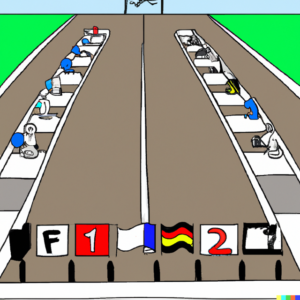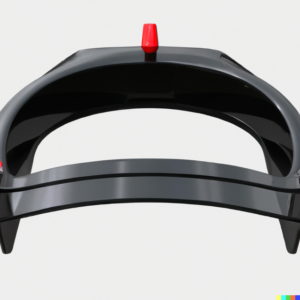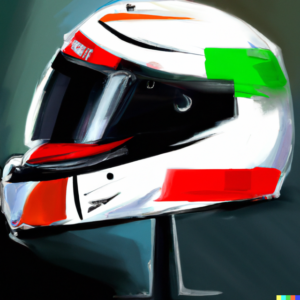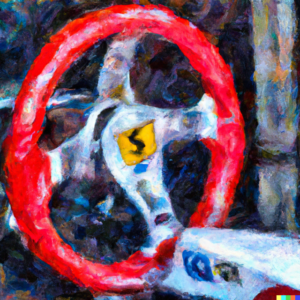How Does A Formula 1 Steering Wheel Work
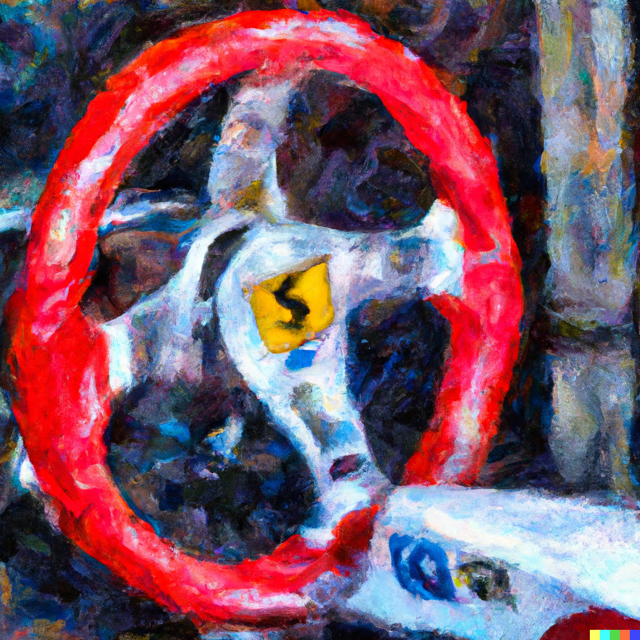
Formula One cars (see how fast Formula 1 cars go) are technological marvels, and even the steering wheel is a complex computer.
Read on to find out more about the F1 steering wheel design and how these complicated components of an F1 car’s systems work.
The Buttons And Switches
Here is a breakdown of all the buttons and switches found on the 2022 steering wheel.
Strategy Dial
F1 Grand Prix circuits come in all shapes and sizes, and different strategies are required for each race.
This is where the strat rotary dial comes in. Team engineers collect data from previous races as well as Practice and Qualifying sessions and come up with several strategies for race day. As the race conditions change over the course of a race (for example, penalties or weather conditions), drivers can use the dial to adjust their strategies.
Menu rotary dial
The menu rotary dial enables drivers to make software changes, enhance their cars, and allow for better performance.
The Drag Reduction System (DRS) is key to overtaking. The DRS button opens up the rear wing of the car, which reduces the downforce, giving the driver a speed boost.
Pit lane speed limiter
When a car enters the pit lane (find out how a pit stop works), it must slow down to 37.28 mph (60 km/h). It can be tough to stick to this speed, so the drivers can simply hit the Pit Button on the steering wheel, and the car will slow down and remain at the pit lane speed.
All drivers have to enter the pit lane at some point during the race.
Losing even a second of time can make or break a driver’s race, so it is important to ensure the team is ready in the pit lane; a driver will push the Pit Confirm button so that the team knows the driver will be coming into the pits and they can be ready to change the front and rear wheels or repair any damage.
Radio
Drivers are able to talk with their engineers for the duration of the race. The drivers are constantly updated on the positions of other drivers, strategy changes, and track conditions.
To talk with the team on the pit wall, the driver simply has to push the radio button on the steering wheel.
The RCH button is used to recharge the car’s batteries during the race. They can then use this boost of extra charge when needed, such as during an overtake.
Race start
The start is probably the most important part of the race, especially if it is a tough circuit where overtaking is difficult.
The race start button is deployed at – well – the start of the race and gives the car maximum power when it’s “lights out and away we go.”
The cockpit is a hot place. Add the fact that the drivers wear gloves, helmets and race suits – so it is easy for them to lose a lot of water during a race. This is why they have a drink system in the car that provides them with hydration.
There is a small pipe in the helmet that connects to the fluids, and the driver can simply press the drinks button to have a sip.
Overtaking is crucial in a Formula One race, and drivers can press the overtaking button to tap some more energy from the hybrid internal combustion engine when they are ready to overtake. This button is easy to reach on the steering wheel as it is used pretty frequently.
Paddle shifters
F1 cars do have a clutch, but it is not where you might think. The clutch is located as paddles on the steering wheel and can help the drivers switch gears easily.
The paddle on the right shifts the car up a gear, while the paddle on the left is used for down-shifting.
RPM Indicators
The revolution per minute (RPM) indicators of F1 cars are located on the steering wheel and are used when changing gears. These indicators are LEDs that are different colors to indicate a high or low RPM.
Steering wheel display
The steering wheel display screen shows all the important settings and details of the car. The menu rotary dial changes can also be seen on the display screen.
Some steering wheels do not have a display – like the Williams racing team.
Additional dials
There are several other dials on the steering wheel. These include dials that control differential settings to help with cornering, engine braking, engine torque transfer, and some switches that control brake migration and brake balance.
Which Buttons and Functions Are The Most Important?
Each circuit will have different buttons and functions that are more important.
Most drivers will agree that the Strategy Dial is the most important as it will impact the car’s performance and can switch between different power unit modes.
The DRS button is also important (just ask Max Verstappen when his DRS did not want to open during Qualifying in Spain 2022) to overtake during the race and reach top speeds during Qualifying.
The most important function of the steering wheel is probably the actual steering of the car, as well as changing gears and adjusting the brake balance depending on how hard the driver is braking.
How Many Steering Wheels Does Each Driver Have?
It depends on the team, but Mercedes confirmed that their drivers have three to four wheels over the course of a season.
Are Steering Wheels Customizable?
There is a set structure for F1 steering wheels, but each team can customize it up to a certain level. For example, the Williams steering wheel does not have a display.
Some teams have more or fewer buttons, while others have small plastic rims installed around certain buttons to prevent drivers from accidentally pressing something they shouldn’t (which happens on circuits like Monaco, where the wheel is set at the maximum steering angle to take the tight turns.
FAQs
Why is a Formula One steering wheel detachable?
It allows drivers to easier climb into and out of the tight cockpit.
Does an F1 steering wheel have a clutch?
Yes, the clutch is part of the steering wheel and is activated by a computer each time the driver uses the shift paddles to change gears.

